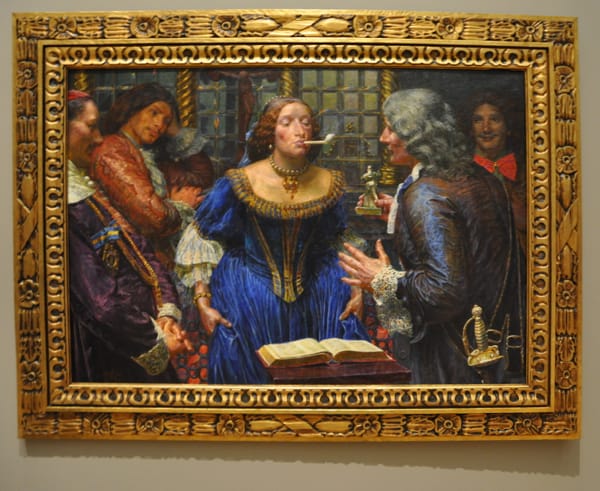Gender Bending in Danish Painting
COPENHAGEN — While I've been exploring contemporary Danish art, I wanted to take time to see some more historic Scandinavian works to put the work in context. A visit to the National Gallery of Denmark was a treat (more about that later) but this one painting by Kristian Zahrtmann was particularly c

COPENHAGEN — While I’ve been exploring contemporary Danish art, I wanted to take time to see some more historic works to put the art in context. A visit to the National Gallery of Denmark was a treat (more about that later) but this one painting by Kristian Zahrtmann was particularly captivating for the content and treatment of the subject, rather than the technique or composition.
I wanted to reproduce the wall label in its entirety because it nudged me to look at the work more (which is what all good wall labels should do, no?):
Kristian Zahrtmann (1843–1917), “Queen Christina in Palazzo Corsini” (1908)
This intimate historical painting show the abdicated Swedish Queen Christina lifting up her dress to heat her behind by the fire. Zahrtmann may have become interested in Christina through his work on the Danish queen Leonora Christina, but he was also fascinated by the myth concerning her ambiguous gender identity. The ambiguity is accentuated here by the phallic pipe and by her inhabiting a traditionally masculine sphere: The spiritual, intellectual sphere, as symbolised by the book and statue.
Zahrtmann was a controversial figure who taught many of the painters of the modern breakthrough. His radical choices of color and motif stood out amongst the concepts of beauty prevalent in his time. Many figures in his work transcend the gender ideals of his time, but in real life he did not think women could be artists.





